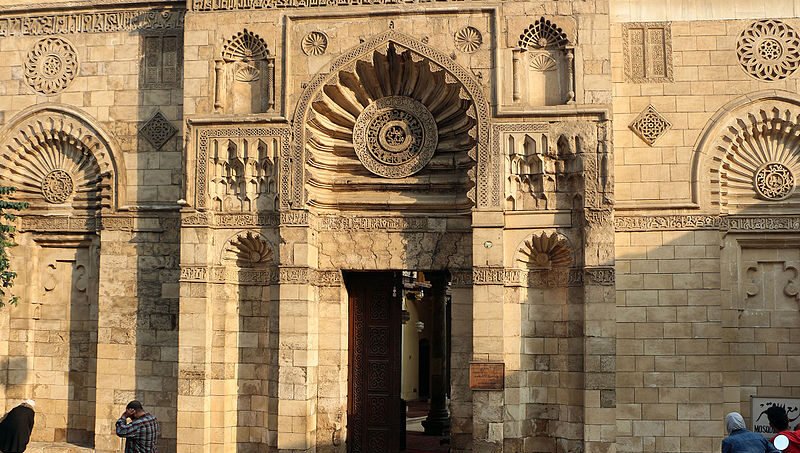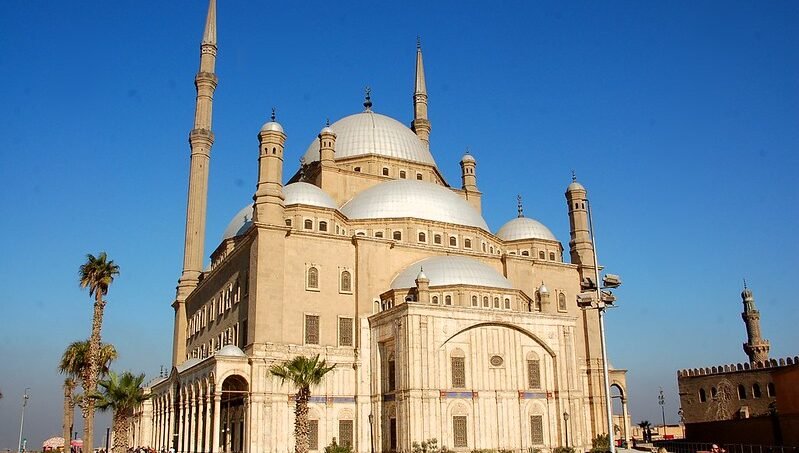Best 8 Sights in Old Cairo: Historic Landmarks and Attractions
Old Cairo served as the foundation for the contemporary city of Cairo, which now houses some of the world’s most stunning attractions. The earliest towns in Old Cairo were founded more than 2,000 years ago, when the construction of an ancient canal connecting the Nile to the Red Sea began. Old Cairo’s sights entice visitors from all over the world to go on a captivating trip through Egypt’s rich history and legacy. Even though the Nile’s waters have receded, Old Cairo is home to notable historical structures. Aside from the Coptic institutions in Cairo, many sites date back to the Greco-Roman period. We built this area to depict the boundary between Upper and Lower Egypt, as well as a Babylonian stronghold on the site.
Top 8 Sights in Old Cairo
You will have a unique nighttime experience in Cairo as you explore its key sites and excellent tourist locations while participating in your favorite activities. Here are the best things to do in Cairo at night:
1- Al-Muizz Al-Din Allah Street

Al-Muizz Al-Din Allah Street is a historical street in the middle of Cairo, Egypt. Al-Muizz Street is well-known for its rich history and architectural value, which includes various medieval Islamic monuments and structures. It was named for Al-Muizz li-Din Allah, the fourth caliph of the Fatimid dynasty that controlled Egypt in the tenth century. Al-Muizz Al-Din Allah Street is also known as “Islamic Cairo” and is a major tourist and historical attraction. It is home to many well-preserved mosques, madrasas (Islamic schools), palaces, and other historical landmarks. This street’s significant landmarks include the Al-Azhar Mosque, the Mosque of Al-Hakim bi-Amr Allah, and the Khan El-Khalili market.
Visitors to Al-Muizz Al-Din Allah Street can discover a unique blend of Islamic architectural styles while immersing themselves in Cairo’s vibrant old city culture. It provides a glimpse into Egypt’s rich history and heritage, making it a must-see destination for anybody interested in Islamic history or architecture.
2- Mosque of Al Aqmar

The Mosque of Al-Aqmar, also known as the Al-Aqmar Mosque, is a historical mosque located in the heart of Islamic Cairo, Egypt. It is well-known for its architectural significance and is regarded as one of the best examples of Islamic architecture from the Fatimid period.
The mosque was built in the 12th century by the Fatimid ruler Al-Mustansir Billah. It is famous for its elaborate and colorful façade, which is embellished with magnificent stucco carvings and inscriptions. The stucco work on the mosque’s facade is particularly impressive, with elaborate geometric patterns and Arabic calligraphy.
The employment of inscriptions to express religious and historical messages is one of the Mosque of Al-Aqmar’s distinguishing features. These inscriptions are beautiful and provide crucial information about the mosque’s construction and rulers at the time.
Visitors to the Mosque of Al-Aqmar can admire its historical and architectural significance, as well as the craftsmanship used in its construction. It is a notable cultural and historical landmark in Cairo, demonstrating the city’s rich Islamic architectural tradition.
3- Sultan Mansur Qalawun Mosque

The Sultan Mansur Qalawun Mosque, often known as the Qalawun Mosque, is a historical Islamic architectural masterpiece in Cairo, Egypt. It was constructed during the Mamluk Sultanate in the 13th century and is a notable example of Mamluk architecture in the city.
The mosque’s key features include a majestic minaret, elaborate geometric designs, and elegantly painted interiors. The mosque is named after Sultan Qalawun, who oversaw its construction between 1279 and 1290.
The mosque’s architecture represents the artistic and cultural influences of the time, incorporating Islamic, Coptic, and Byzantine design features. Its minaret, in particular, is a masterwork of Mamluk craftsmanship, with exquisite ornamentation and a unique spiral stairway.
The mosque’s interior has an outstanding prayer hall with rows of columns and arches decorated with elaborate stucco work and Quranic calligraphy. It provides a peaceful and meditative ambiance that encourages visitors to appreciate its historical and architectural value.
The Sultan Mansur Qalawun Mosque serves as both a place of worship and a monument of Cairo’s rich cultural legacy. It is a testimony to the creative triumphs of the Mamluk era. It remains a destination of veneration and adoration for both residents and visitors interested in Islamic architecture and history.
4- Wekalet El Ghoury

Wekalet El Ghoury, also known as Wekalet El-Ghouri or the Ghouri Palace, is a historic building in Cairo, Egypt. It is a key cultural and architectural landmark for the city. The palace was constructed during the Mamluk dynasty in the 16th century and is renowned for its spectacular Islamic architecture and design.
One of the most distinguishing elements of Wekalet El Ghoury is its wonderfully adorned courtyard, which is frequently utilized as a location for cultural events, music concerts, and traditional dance acts. The palace acts as a center for promoting Egyptian culture and tradition, and it is a major Cairo tourist attraction.
Visitors to Wekalet El Ghoury can enjoy the building’s architectural splendor as well as the cultural events it provides, such as Sufi dance performances and concerts. It’s a one-of-a-kind destination for learning about Cairo’s rich history and artistic traditions.
5- Salah El-Din Citadel

Salah El-Din was born in Tikrit, Iraq, in 1137 and later studied the Quran, theology, astronomy, mathematics, and law, among other disciplines. He obtained his military instruction from his uncle, Asad-al-Din Shirkoh, the Zengid dynasty’s leader and army member.
Salah El-Din was able to take on leadership roles during military conflicts due to his outstanding performance in wartime battles. With his exceptional ability and well-executed schemes, he ascended through the ranks from soldier to king of Egypt and Syria. His might enabled him to topple the Fatimids in Egypt while maintaining control over the kingdom.
The Citadel, located at the top of the rocky hills overlooking the city, was the focal point of these vast walls. It was here that the city was best protected. Saladin’s castle, finished in 1183, served as Egypt’s official residence for 700 years until Khedive Ismail moved into the Abdeen Palace in the 1870s. The Salah El-Din Citadel, which was first built as a stronghold against the Crusaders, was expanded by numerous rulers.
The Citadel was the city’s focal point and a defensive fortification against the formidable heights of the hills that surrounded it. For 700 years, the Citadel was the official residence of the Egyptian government. In 1870, Khedive Ismail relocated his administration to Abdeen Palace in central Cairo, changing the political scene.
6- Mohammed Ali Mosque

Mohammad Ali is largely recognized as modern Egypt’s founding father. In 1805, he became the Khedive of Egypt and Sudan. After that, Egypt was occupied by the French from 1798 to 1801, and his successors ruled the country until the 1952 revolution led by free officers. Mohamed Ali built one of Cairo’s most spectacular monuments, which has endured to this day.
After his son died, he decided to build the Alabaster Mosque in his memory. The mosque can be seen clearly from anywhere in the compound. Other museums inside the Citadel and Mohamed Ali Mosque include the National Military Museum, which houses uniforms and weapons from Muhammad Ali’s reign, a police museum, and other museums related to Muhammad Ali’s palace.
7- Mosque of Amr Ibn Al Aas

Amr Ibn Al-Aas is regarded as one of Egypt’s most important historical figures since he introduced Islam to the country. He founded Fustat, which is positioned north of Babylon’s stronghold.
The Amr Ibn Al-Aas Mosque, which stands on the site of the future city of Fustat, remains a notable monument. None of the mosque’s original buildings have remained due to multiple reconstructions. Despite this, the Amr Ibn Al-Aas Mosque is the oldest in Egypt and Africa. One unique detail regarding the Amr Ibn Al-Aas Mosque is that a dove hatched on the general’s tent while the army was stationed outside of the city.
During the Greco-Roman period, the city was attacked as the army prepared to march to Alexandria, Egypt’s capital. Following the Muslim army’s conquest of Alexandria and subsequent conquest of all of Egypt, Caliph Umar planned to establish a new capital near Medina.
Amr Ibn Al-Aas instructed his tent to remain in its current location because he perceived the dove’s nest as a sign of God’s will. Later, Amr Ibn Al-Aas ordered that a mosque be built on the tent’s site, and the mosque became the focal point of Egypt’s new Muslim capital, Fustat, for many years. The mosque, erected in 642 AD and named after General Amr Ibn Al-Aas, was dedicated to him. It was both Egypt’s and Africa’s first mosque.
8- Sultan Hassan Mosque and Madrasa

The mosque is a wonderful example of Mamluk architecture and should be viewed. It was created in the 14th century. The mosque’s vast scale was stunning at the time, and its architecture and beauty continue to leave an indelible impression on those who come today.
Sultan Hassan, for whom the Sultan Hassan Mosque in Old Cairo is named, commissioned its construction through Prince Muhammad Ibn Babylik Al-Muhassani. The mosque was built using stones and bricks and took four years to complete. The region where the mosque was built was known as Souk al Khayl, or “horse market.”
The mosque is regarded as one of the most significant architectural structures in Islamic culture. The Sultan Hassan Mosque, a landmark of old Islamic Cairo, is equivalent to the Pyramids of Giza in ancient Pharaonic Egypt in terms of significance as an Egyptian landmark. The interior of the mosque is magnificently decorated, with a huge and impressive courtyard space. The mosque is well-known for its sheer size, and it is frequently regarded as the most famous of the city’s other massive mosques.
Conclusion
To summarize, Old Cairo is a rich mine of historical and cultural sites that provide an intriguing journey through time. Its rich heritage, as seen by its historic mosques, churches, museums, and thriving marketplaces, provides tourists with a unique opportunity to immerse themselves in the city’s illustrious history. Exploring Old Cairo’s small passageways and bustling streets is like going back in time, with each step carrying echoes of centuries-old civilizations.
Whether you’re admiring the stunning grandeur of the Sultan Hassan Mosque, discovering the delicate beauty of Coptic Christian heritage, or getting lost in the labyrinthine passageways of Khan el-Khalili, Old Cairo brings the past to life. It demonstrates the lasting spirit of this extraordinary city and is a must-see site for everyone interested in Egypt’s rich history and lively culture.

